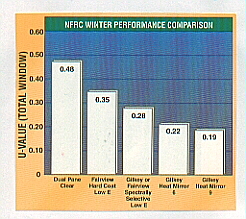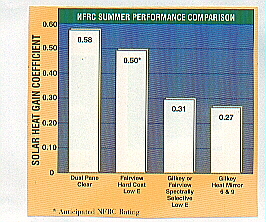We have a couple of very cool restaurants here in Cincinnati where you can go to get double-decker and triple-decker sandwiches. The combinations seem endless. You can get a turkey and roast beef double-decker with Swiss cheese on wheat bread. How about a ham, egg and ham triple-decker on white bread with lettuce, tomato and mayo? It is yours, if you order it. When you look at the menu, your eyes glaze over. It is the same feeling you get when you listen to the window film sales pitch. There are so many choices!
Different Films for Different Rooms
If you are thinking of buying window films, you need to make a list. Go room by room. List in order of importance what you want to accomplish in each room. Perhaps heat gain is really important in a west facing family room followed by privacy. The most important concerns in your living room might be fabric fade followed by heat loss in the winter time.
Once you have this list made up, it will be an easy chore to meet with the window film sales person. Without this list, things can get confusing very quickly.
Source of Confusion
Each of the window films you look at has been tested with respect to their effectiveness (expressed as a percentage) to prevent the following:
- Total Solar Transmittance
- Total Solar Reflectance
- Total Solar Absorption
- Visible Light Transmittance
- Visible Light Reflectance
- Ultraviolet Transmittance
- Total Solar Energy Reflected
Different films will have wildly different values in each of the categories. They simply are made to do different things. The values help you to judge which film will work best for you in each room.
A Company called CP Films makes a window film line called LLumar. I have one of their film sample swatches. For each film there is a card that shows the values for each of the listed categories. It is very helpful when looking at different films. Try to get one of these handy tools when you begin to look at films.
Removing Existing Films
As soon as my column on window films appeared, many people contacted me who had existing films. They wanted to know how to remove them.
The trick to removing existing window films is a combination of patience, numerous single edge sharp razor blades, and ammonia based window cleaners.
Start by slicing through the film about 3 inches from a corner. Cut at a 45 degree angle. Try to slide the razor under the film to peel it up. Pull at the same time you scrape. Change blades when they become clogged with adhesive. Remove the old adhesive with a combination of 409 and Windex or a strong solution of ammonia and water.
Warranties and Life Spans
Pay attention to the warranties that come with the window films you intend to buy. Some of them are impressive. Full lifetime warranties for labor and material are out there!
High quality window films can last indefinitely if they are cared for. The biggest problem comes from improper cleaning. If you goof up or are careless when you wash window films, you can begin to scratch them. Although the films are scratch resistant, they are by no means scratch-proof.
Lightly brush/dust or blow away large dust particles on window films. Never clean windows covered with film using a dry technique. You need to introduce a window cleaning solution to lubricate the film as it is being cleaned.
The best advice is to make sure you obtain and follow the written cleaning instructions from the window film manufacturer. If you are dealing with a first class installer, they will give these to you before they leave your home. You say you are going to install the films yourself? Well, I wish you the best of luck and hope that your new nickname isn't Mr. Bubble, Mr. Crease, or Mr. Blister!
Companion Articles: Window Films, Window Film FAQ, Window Film - It Works Well, Window Film Companies
Column B267

